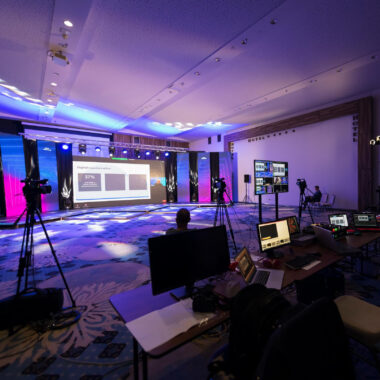
When planning an event, one of the most important aspects is ensuring that your attendees stay connected. However, once the event concludes, many organizers overlook the significance of post-event Wi-Fi reports. These reports offer valuable insights into how the network performed, the level of engagement, and where improvements can be made for future events. In this blog, we will explore why post-event Wi-Fi reports are essential, what you can expect from them, and how they can help enhance your future events.
As an event Wi-Fi provider, we understand that every detail matters; especially when it comes to ensuring seamless connectivity for your attendees. Conference Wi-Fi solutions are often crucial to the success of large gatherings, and these reports can provide the data you need to optimize your Wi-Fi strategy.
Why Post-Event Wi-Fi Reports Are Important
After the buzz of your event fades, the work is not over. Analyzing how well the event Wi-Fi performed during the event is a key part of improving your overall connectivity strategy for future gatherings. Here’s why these reports are essential:
1. Evaluating Network Performance
Wi-Fi performance is often a critical element of event success. A post-event report helps you evaluate whether the network met expectations for speed, connectivity, and reliability. It provides data on the number of devices connected, bandwidth usage, and peak usage times.
If any areas experienced weak or slow connections, this information allows you to identify the root cause and take corrective actions for your next event.
2. Improving Attendee Experience
One of the main goals of conference Wi-Fi solutions is to keep attendees engaged. With detailed usage statistics from the report, you can analyze which areas of the venue had more or fewer users, which services were most commonly accessed (social media, streaming, email), and whether any connectivity issues affected attendee satisfaction.
Understanding this data enables you to optimize the Wi-Fi for future events and ensure a better experience for your guests.
3. Justifying Costs and Budgeting
A post-event Wi-Fi report can also help justify your event’s connectivity costs. It demonstrates the value of investing in a reliable solution by showing how much bandwidth was consumed, how the network was utilized, and whether it delivered on expectations. This information is especially useful when budgeting for future events, allowing you to make informed decisions about resource allocation.
4. Optimizing Future Events
Post-event analytics provide actionable insights that help you enhance future event performance. For instance, if certain venue areas experienced dropouts or slower speeds, you can plan for improved coverage in those zones. Likewise, if video streaming consumed a significant portion of bandwidth, you can increase capacity for that specific usage next time.
What to Expect from Post-Event Wi-Fi Reports
So, what exactly will you find in your event Wi-Fi post-event report? Here are the key components:
1. Network Utilization Data
You’ll receive a breakdown of how the network was used throughout the event, including the number of connected devices, total bandwidth usage, and peak traffic times. This data helps identify high-demand areas and assess how well the network handled pressure.
2. Connection Quality Metrics
Expect insights into connection quality, including dropouts, speed issues, and any disruptions that may have impacted user experience. This information helps you pinpoint specific areas for improvement.
3. Heat Map of Coverage
Some conference Wi-Fi solutions providers include heat maps showing areas of strong and weak Wi-Fi coverage. These visual tools help you identify where attendees had the best or worst connectivity so you can refine future setups.
4. Device and Service Usage Breakdown
A comprehensive post-event Wi-Fi report includes data on device types and commonly accessed services. For example, if many attendees used video platforms or joined virtual sessions, you’ll know to plan for greater bandwidth in those areas next time.
5. Cost Efficiency Analysis
Some reports also assess how the Wi-Fi performed relative to its cost, comparing expected versus actual usage. This helps determine whether the service was cost-effective for the level of connectivity provided.
How to Use These Reports to Improve Future Events
Post-event Wi-Fi reports are not just for performance reviews; they are tools for continuous improvement. Here’s how to use these insights:
- Make Data-Driven Decisions: Use performance and usage data to decide what improvements are necessary. If some zones had poor coverage or high demand, consider adjusting your network layout or adding access points.
- Optimize Bandwidth Allocation: If certain services—like streaming—were heavily used, allocate more bandwidth accordingly at your next event.
- Prepare for Higher Attendance: If your event exceeded expected turnout, plan for scalable Wi-Fi coverage in the future. This might include additional access points or bandwidth upgrades.
- Improve Guest Experience: Ultimately, the goal of providing event Wi-Fi is to enhance the guest experience. By reviewing post-event reports and making adjustments, you can ensure smoother service and higher satisfaction at future events.










